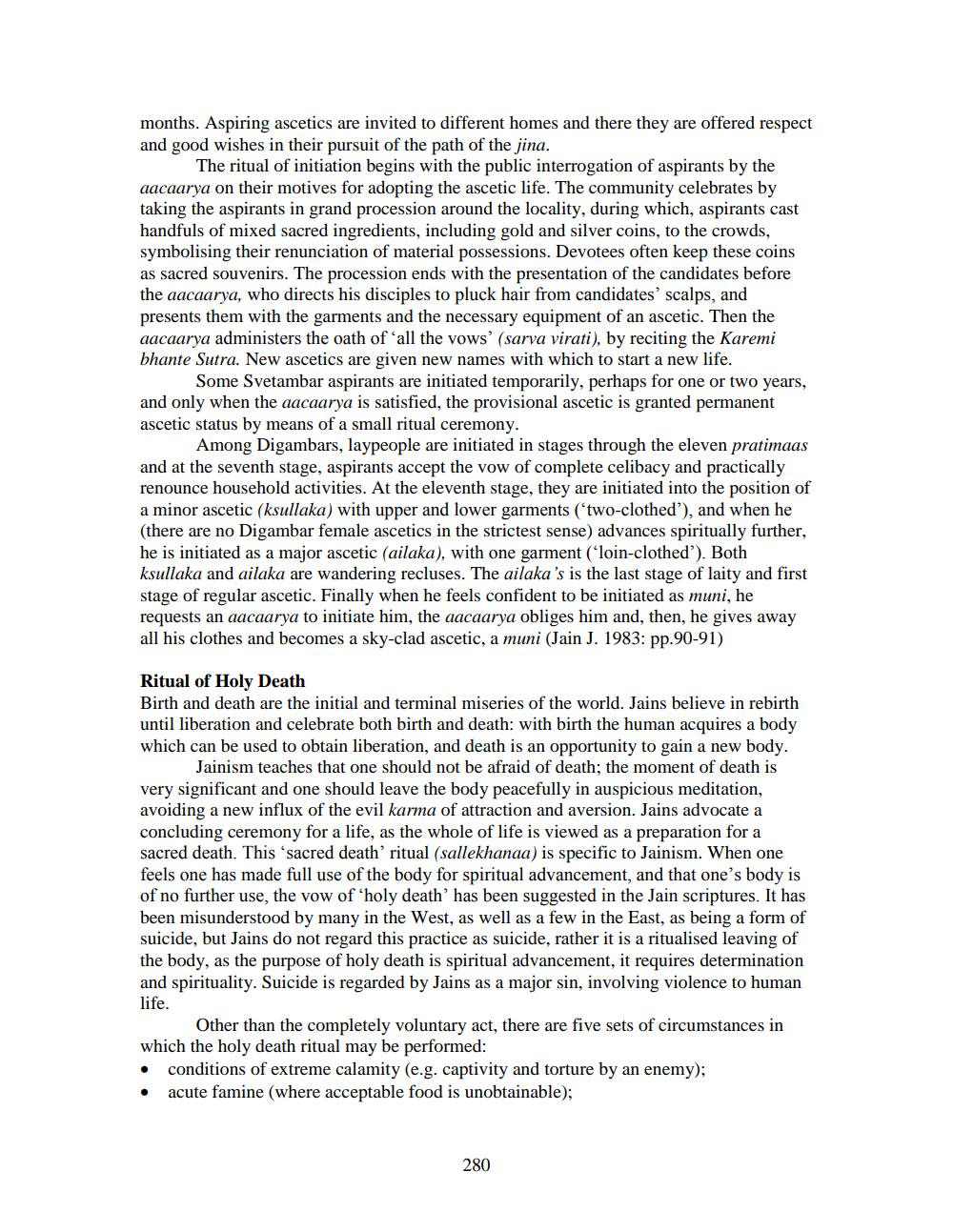________________
months. Aspiring ascetics are invited to different homes and there they are offered respect and good wishes in their pursuit of the path of the jina.
The ritual of initiation begins with the public interrogation of aspirants by the aacaarya on their motives for adopting the ascetic life. The community celebrates by taking the aspirants in grand procession around the locality, during which, aspirants cast handfuls of mixed sacred ingredients, including gold and silver coins, to the crowds, symbolising their renunciation of material possessions. Devotees often keep these coins as sacred souvenirs. The procession ends with the presentation of the candidates before the aacaarya, who directs his disciples to pluck hair from candidates' scalps, and presents them with the garments and the necessary equipment of an ascetic. Then the aacaarya administers the oath of all the vows' (sarva virati), by reciting the Karemi bhante Sutra. New ascetics are given new names with which to start a new life.
Some Svetambar aspirants are initiated temporarily, perhaps for one or two years, and only when the aacaarya is satisfied, the provisional ascetic is granted permanent ascetic status by means of a small ritual ceremony.
Among Digambars, laypeople are initiated in stages through the eleven pratimaas and at the seventh stage, aspirants accept the vow of complete celibacy and practically renounce household activities. At the eleventh stage, they are initiated into the position of a minor ascetic (ksullaka) with upper and lower garments ('two-clothed'), and when he (there are no Digambar female ascetics in the strictest sense) advances spiritually further, he is initiated as a major ascetic (ailaka), with one garment (loin-clothed'). Both ksullaka and ailaka are wandering recluses. The ailaka's is the last stage of laity and first stage of regular ascetic. Finally when he feels confident to be initiated as muni, he requests an aacaarya to initiate him, the aacaarya obliges him and, then, he gives away all his clothes and becomes a sky-clad ascetic, a muni (Jain J. 1983: pp. 90-91)
Ritual of Holy Death Birth and death are the initial and terminal miseries of the world. Jains believe in rebirth until liberation and celebrate both birth and death: with birth the human acquires a body which can be used to obtain liberation, and death is an opportunity to gain a new body.
Jainism teaches that one should not be afraid of death; the moment of death is very significant and one should leave the body peacefully in auspicious meditation, avoiding a new influx of the evil karma of attraction and aversion. Jains advocate a concluding ceremony for a life, as the whole of life is viewed as a preparation for a sacred death. This 'sacred death' ritual (sallekhanaa) is specific to Jainism. When one feels one has made full use of the body for spiritual advancement, and that one's body is of no further use, the vow of 'holy death' has been suggested in the Jain scriptures. It has been misunderstood by many in the West, as well as a few in the East, as being a form of suicide, but Jains do not regard this practice as suicide, rather it is a ritualised leaving of the body, as the purpose of holy death is spiritual advancement, it requires determination and spirituality. Suicide is regarded by Jains as a major sin, involving violence to human
life.
Other than the completely voluntary act, there are five sets of circumstances in which the holy death ritual may be performed:
conditions of extreme calamity (e.g. captivity and torture by an enemy); acute famine (where acceptable food is unobtainable);
280




